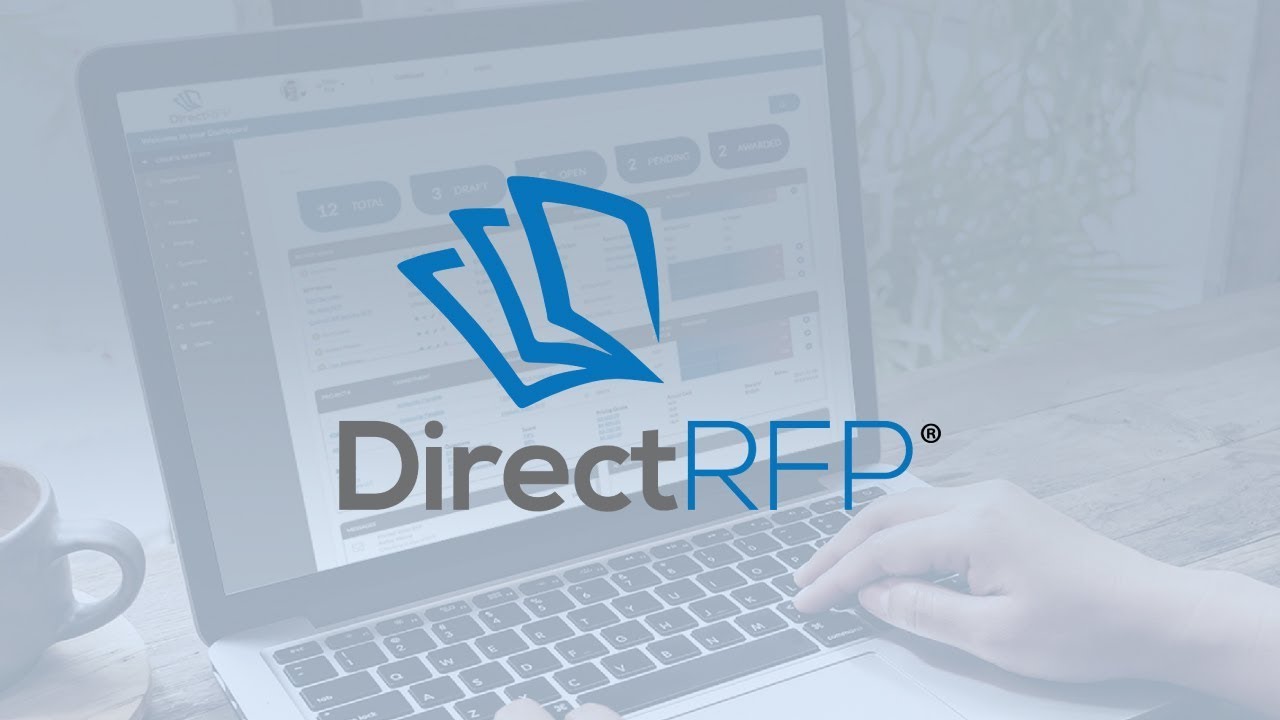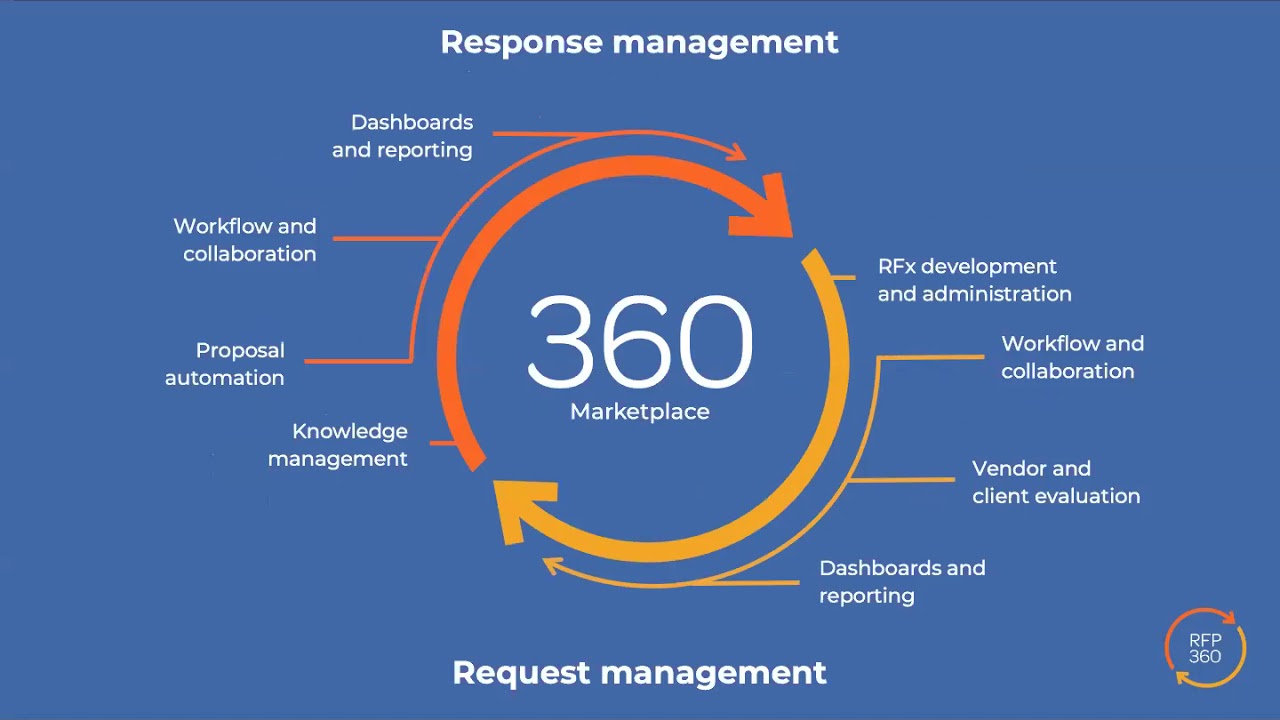RFP Technology: Streamlining Procurement Processes
RFP technology, a transformative force in the procurement landscape, empowers organizations to manage requests for proposals (RFPs) with unprecedented efficiency and effectiveness. This technology streamlines the entire procurement process, from […]

RFP technology, a transformative force in the procurement landscape, empowers organizations to manage requests for proposals (RFPs) with unprecedented efficiency and effectiveness. This technology streamlines the entire procurement process, from initial vendor identification to contract negotiation, significantly reducing time, cost, and effort while fostering transparency and fairness.
RFP technology solutions leverage advanced features like automated vendor communication, online bidding platforms, and comprehensive evaluation tools to simplify and expedite the procurement process. They enable organizations to engage with a wider pool of potential vendors, facilitating competitive bidding and ultimately leading to better pricing and quality.
RFP Technology Overview

RFP technology, or Request for Proposal technology, is a suite of software tools designed to streamline and automate the procurement process, particularly the Request for Proposal (RFP) stage. This technology helps organizations efficiently manage the entire RFP process, from creating and distributing RFPs to evaluating proposals and selecting vendors.
Types of RFP Technology Solutions
The market offers various RFP technology solutions, each catering to specific needs and functionalities. Here are some prominent types:
- RFP Automation Software: These platforms automate the creation, distribution, and management of RFPs, simplifying the process for both requesters and potential vendors. They often include features like pre-built templates, vendor databases, and automated scoring mechanisms.
- eProcurement Platforms: These comprehensive platforms integrate RFP management with other procurement functions, such as sourcing, contract management, and supplier relationship management. They offer a centralized hub for all procurement activities.
- Vendor Management Systems (VMS): These systems focus on managing the vendor lifecycle, including onboarding, performance evaluation, and contract renewals. Some VMS platforms also include RFP management capabilities.
- Sourcing and Procurement Suites: These integrated solutions combine various procurement functionalities, including RFP management, sourcing, contract management, and spend analysis, providing a holistic view of the procurement process.
Industries Utilizing RFP Technology
RFP technology has found widespread adoption across various industries, including:
- Technology: The tech industry heavily relies on RFP technology for procuring software, hardware, and IT services. This is because the complexity of these procurements requires efficient management and evaluation.
- Healthcare: Healthcare organizations utilize RFP technology for procuring medical equipment, pharmaceuticals, and healthcare services, ensuring compliance with regulatory requirements and cost optimization.
- Financial Services: Financial institutions use RFP technology for sourcing banking solutions, investment management services, and other financial products and services.
- Government: Government agencies leverage RFP technology for public procurement, ensuring transparency and fairness in the selection of vendors for various projects.
- Manufacturing: Manufacturing companies use RFP technology for procuring raw materials, machinery, and manufacturing services, optimizing their supply chain and production processes.
Benefits of Using RFP Technology
Implementing RFP technology offers a range of advantages for organizations, streamlining the procurement process, enhancing efficiency, and promoting transparency.
Streamlining the Procurement Process
RFP technology significantly simplifies and accelerates the procurement process by automating key tasks.
- Automated Vendor Communication: RFP technology allows for automated communication with vendors, streamlining the process of sending out RFPs, receiving responses, and managing communication throughout the procurement cycle. This eliminates manual tasks, saves time, and reduces the risk of errors.
- Centralized Platform: RFP technology provides a centralized platform for managing all aspects of the procurement process. This allows organizations to track all RFPs, vendor responses, and communication in one location, improving organization and visibility.
- Automated Evaluation: RFP technology can automate the evaluation process, allowing organizations to quickly and efficiently compare vendor proposals based on predefined criteria. This eliminates the need for manual scoring and reduces the risk of bias.
Improving Transparency and Fairness
RFP technology promotes transparency and fairness in the procurement process by providing a standardized and auditable framework.
- Standardized Process: RFP technology ensures a standardized process for all RFPs, eliminating the potential for bias or favoritism. This ensures that all vendors are treated equally and have an equal opportunity to participate.
- Auditable Trail: RFP technology provides an auditable trail of all communication, responses, and decisions made during the procurement process. This allows organizations to demonstrate transparency and accountability.
- Reduced Risk of Conflicts of Interest: RFP technology helps to reduce the risk of conflicts of interest by providing a clear and transparent process. This ensures that all decisions are made based on merit and not on personal relationships or biases.
Key Features of RFP Technology Solutions

RFP technology solutions are designed to streamline the request for proposal (RFP) process, making it more efficient and effective. They offer a wide range of features that can help organizations manage the entire RFP lifecycle, from creation and distribution to evaluation and vendor selection.
Essential Features of RFP Technology Solutions
RFP technology solutions are designed to streamline the request for proposal (RFP) process, making it more efficient and effective. They offer a wide range of features that can help organizations manage the entire RFP lifecycle, from creation and distribution to evaluation and vendor selection.
- RFP Template Library: A robust RFP technology solution should provide a library of pre-built RFP templates that can be customized to fit specific needs. This saves time and ensures consistency across different RFPs.
- Automated RFP Distribution: The ability to automatically distribute RFPs to potential vendors via email or other channels is crucial for efficient outreach. This feature ensures that all vendors receive the RFP simultaneously and eliminates the need for manual distribution.
- Vendor Management: A comprehensive vendor management system allows organizations to track and manage vendor information, including contact details, qualifications, and performance history. This information can be used to identify and select the best vendors for specific projects.
- Proposal Evaluation and Scoring: RFP technology solutions should provide tools for evaluating and scoring vendor proposals. This can be done through a standardized scoring system or by using a weighted evaluation matrix. The ability to collaborate on proposal evaluation and scoring with team members is also essential.
- Reporting and Analytics: Robust reporting and analytics features allow organizations to track key metrics related to the RFP process, such as time to close, vendor response rates, and overall satisfaction. These insights can be used to improve future RFP processes.
Comparison of RFP Technology Platforms
RFP technology platforms vary in their functionality and features. Some platforms are designed for specific industries or use cases, while others offer more general functionality. Here is a comparison of some of the key features offered by different RFP technology platforms:
| Feature | Description | Benefits |
|---|---|---|
| RFP Template Library | Provides pre-built RFP templates that can be customized to fit specific needs. | Saves time and ensures consistency across different RFPs. |
| Automated RFP Distribution | Allows organizations to automatically distribute RFPs to potential vendors via email or other channels. | Ensures that all vendors receive the RFP simultaneously and eliminates the need for manual distribution. |
| Vendor Management | Provides tools for managing vendor information, including contact details, qualifications, and performance history. | Helps organizations identify and select the best vendors for specific projects. |
| Proposal Evaluation and Scoring | Provides tools for evaluating and scoring vendor proposals. | Ensures that proposals are evaluated fairly and consistently. |
| Reporting and Analytics | Provides insights into key metrics related to the RFP process, such as time to close, vendor response rates, and overall satisfaction. | Helps organizations improve future RFP processes. |
RFP Technology Implementation Process
Implementing RFP technology involves a systematic approach to integrate the software into an organization’s existing processes and systems. This process requires careful planning, stakeholder engagement, and a clear understanding of the organization’s specific needs and goals.
Implementation Steps
Implementing RFP technology typically involves several key steps. These steps ensure a smooth transition and maximize the benefits of the new software.
- Needs Assessment and Requirements Definition: Begin by clearly defining the organization’s requirements for RFP management. This includes identifying specific pain points, desired functionalities, and integration needs with existing systems. This stage involves gathering input from stakeholders across departments to ensure the software aligns with the organization’s overall goals.
- RFP Technology Selection: Based on the identified needs, conduct a thorough evaluation of available RFP technology solutions. Consider factors such as features, pricing, vendor reputation, ease of use, and scalability. This stage may involve requesting demos, conducting trials, and comparing different vendors to find the best fit.
- Configuration and Customization: Once the RFP technology is selected, it needs to be configured and customized to match the organization’s specific workflows and data structures. This involves setting up user roles, defining approval processes, and integrating the software with existing systems.
- User Training and Adoption: Provide comprehensive training to users on how to effectively use the RFP technology. This includes hands-on training, documentation, and ongoing support to ensure users are comfortable with the new system.
- Go-Live and Monitoring: After successful testing and user training, the RFP technology can be launched. Closely monitor the system’s performance and user adoption during the initial period. Collect feedback from users and make necessary adjustments to optimize the implementation.
Best Practices for Successful Implementation
- Clearly Define Objectives: Establish clear goals for the RFP technology implementation. What are the key challenges the software is meant to address? What are the expected benefits and outcomes? This clarity helps guide the implementation process and measure its success.
- Involve Stakeholders: Engage key stakeholders from different departments throughout the implementation process. This includes procurement, legal, finance, and IT. Their input is crucial for identifying needs, ensuring alignment, and fostering user adoption.
- Prioritize User Experience: Choose an RFP technology solution that is user-friendly and intuitive. Provide adequate training and support to ensure users can easily navigate the system. A positive user experience is essential for successful adoption and maximizing the software’s benefits.
- Phased Rollout: Consider a phased rollout approach to minimize disruption and allow for adjustments along the way. Start with a pilot group, gather feedback, and then gradually expand to other departments. This approach reduces risks and ensures a smoother implementation.
- Continuous Improvement: RFP technology implementation is an ongoing process. Regularly assess the software’s performance, collect user feedback, and make adjustments as needed. This iterative approach helps optimize the system and ensure it continues to meet the organization’s evolving needs.
RFP Technology Deployment Flowchart
The following flowchart illustrates the key stages of deploying RFP technology within an organization:
Stage 1: Planning and Preparation
- Define business requirements and goals.
- Identify stakeholders and their roles.
- Evaluate RFP technology solutions.
- Develop an implementation plan.
Stage 2: Implementation
RFP technology is a crucial part of any modern procurement process, allowing organizations to clearly define their needs and receive competitive bids from vendors. Understanding the technical aspects of RFPs can be greatly enhanced by obtaining a certificate in information communication technology , providing valuable insights into the complexities of IT systems and infrastructure, which are often central to RFPs.
- Configure and customize the software.
- Integrate with existing systems.
- Develop user training materials.
- Conduct user testing and feedback.
Stage 3: Deployment and Monitoring
- Launch the RFP technology solution.
- Monitor system performance and user adoption.
- Collect and analyze user feedback.
- Make necessary adjustments and improvements.
This flowchart provides a high-level overview of the deployment process. The specific steps and timelines will vary depending on the organization’s size, complexity, and specific requirements.
RFP Technology and Data Security
In the realm of procurement, RFP technology plays a crucial role in streamlining the process, but it also introduces the critical need for robust data security measures. Sensitive information, such as pricing details, supplier specifications, and company strategies, is exchanged during the RFP process, making data security paramount.
Data Security Measures in RFP Technology Platforms
RFP technology providers prioritize data privacy and compliance through a range of security measures, ensuring the protection of sensitive information. These measures typically include:
- Data Encryption: RFP technology platforms employ encryption techniques to safeguard data during transmission and storage. This involves converting data into an unreadable format, rendering it inaccessible to unauthorized individuals.
- Access Control: Access to sensitive data is restricted through user authentication and role-based access control. This ensures that only authorized personnel can view and modify critical information.
- Regular Security Audits: RFP technology providers conduct regular security audits to identify and address potential vulnerabilities. These audits help ensure the ongoing security of the platform and its data.
- Data Backup and Disaster Recovery: Data backups and disaster recovery plans are essential for protecting data against accidental loss or security breaches. This ensures that data can be restored quickly and efficiently in case of an incident.
- Compliance with Industry Standards: RFP technology providers often comply with industry standards such as ISO 27001 and SOC 2, demonstrating their commitment to data security and privacy.
Future Trends in RFP Technology
The landscape of RFP technology is constantly evolving, driven by advancements in technology and the changing needs of businesses. As we look ahead, several trends are shaping the future of RFP technology, promising to revolutionize the procurement process and empower organizations to make more informed and efficient decisions.
Impact of AI and ML on RFP Technology
Artificial intelligence (AI) and machine learning (ML) are playing an increasingly significant role in transforming RFP technology. AI-powered tools are being integrated into RFP platforms to automate tasks, enhance data analysis, and improve decision-making.
- Automated RFP Generation: AI can analyze historical data and industry best practices to automatically generate customized RFP templates, saving time and ensuring consistency.
- Intelligent Bid Evaluation: ML algorithms can analyze bid responses, identify key criteria, and score bids based on predefined parameters, providing objective and data-driven insights.
- Predictive Analytics: AI can predict potential risks and opportunities in procurement, enabling organizations to make proactive decisions and optimize their sourcing strategies.
The Future of RFP Technology
The future of RFP technology is characterized by a focus on streamlining the procurement process, enhancing collaboration, and leveraging data insights to drive better decision-making.
- Cloud-Based Solutions: Cloud-based RFP platforms are becoming increasingly popular, offering scalability, accessibility, and cost-effectiveness.
- Integration with Other Systems: RFP platforms are being integrated with other enterprise systems, such as CRM, ERP, and supply chain management systems, to create a unified and seamless procurement experience.
- Data-Driven Insights: RFP technology will continue to leverage data analytics to provide actionable insights, enabling organizations to identify trends, track performance, and optimize their procurement strategies.
Summary
The adoption of RFP technology is revolutionizing the procurement landscape, empowering organizations to achieve greater efficiency, transparency, and cost savings. As the technology continues to evolve, driven by advancements in artificial intelligence and machine learning, we can expect even more innovative solutions to emerge, further simplifying and optimizing the procurement process.




